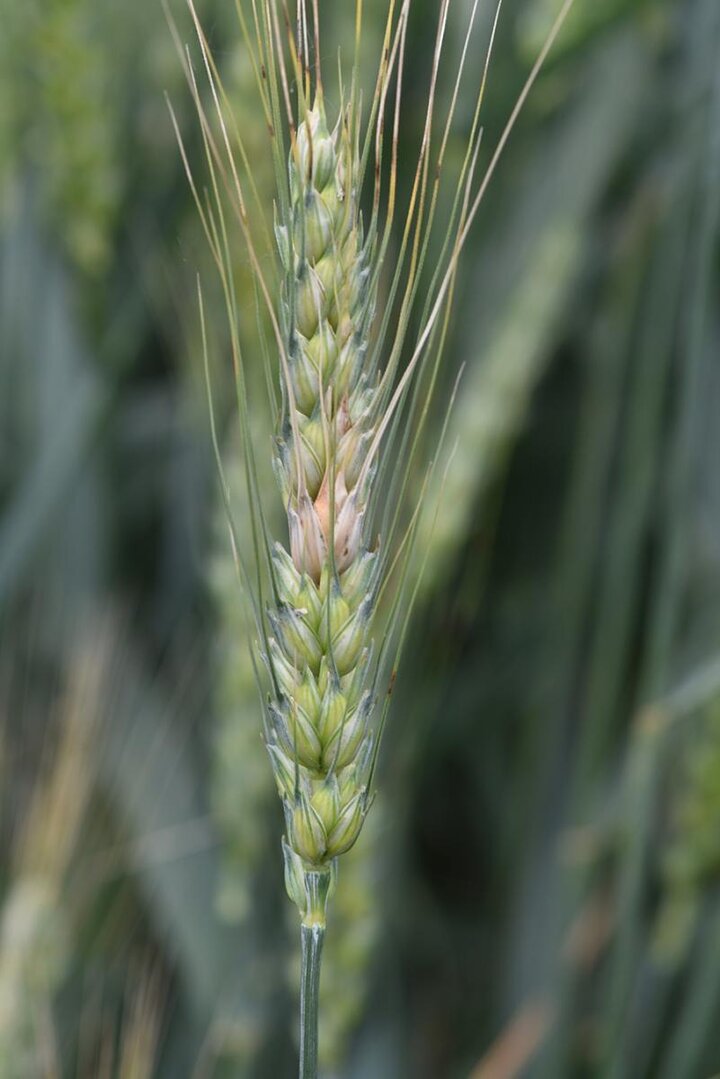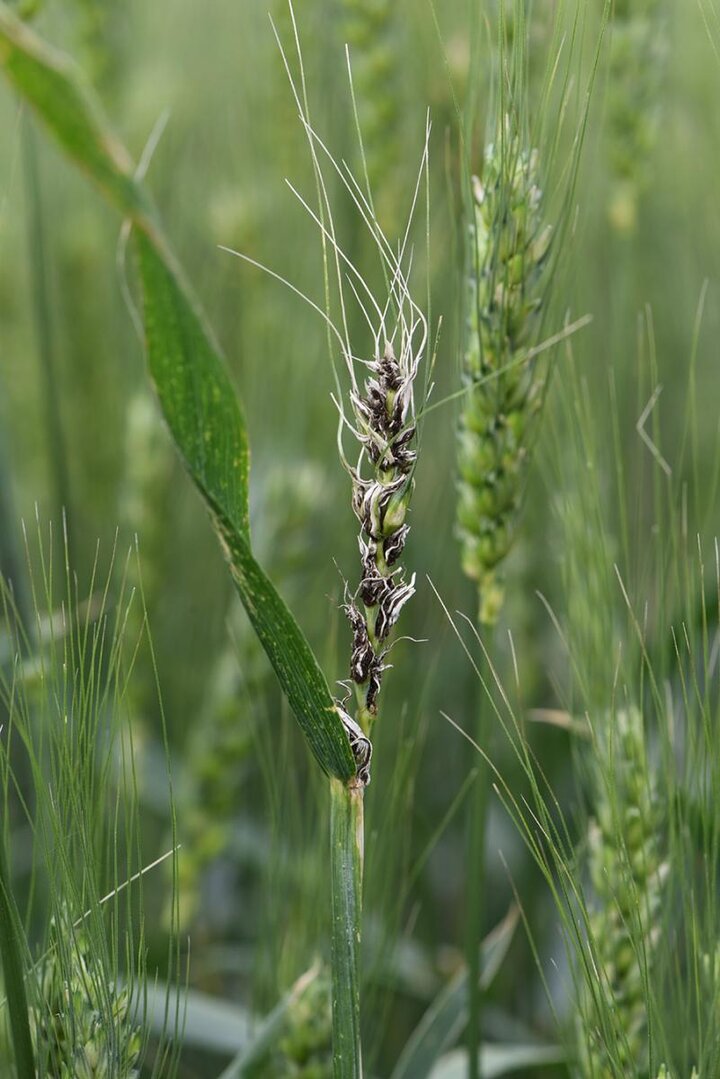Diseases continue to be absent or at very low levels in Nebraska wheat fields, with most fields that have received moisture looking lush green (Figure 1). To date there have been no reports of stripe rust or leaf rust in Nebraska. Low levels of powdery mildew have been observed in some growers’ fields. The majority of wheat in the state is headed, flowering, or in the milk or early dough growth stage. In addition to white heads caused by wheat stem maggot damage (see May 31 story), head diseases are starting to show up, but only at trace to low levels. At the Havelock Research Farm near Lincoln on June 4, trace levels of Fusarium head blight (Figure 2) and loose smut (Figure 3) were observed, as well as trace levels of fungal leaf spots in the lower canopy (Figure 4).



The prevailing high temperatures and dry conditions in many wheat growing areas of the state will slow down or prevent disease development. The risk for stripe rust is considerably reduced because it is favored by cool, wet conditions. The Fusarium head blight risk assessment tool is showing a low risk for the entire state. Reports from Kansas indicate only low levels of leaf rust which is favored by warmer temperatures and wet conditions. It is likely that we will see some leaf rust in Nebraska in the coming weeks, but the growing season will have progressed to the point where yield impact will be minimal.

